Latin America Residential Construction Market Size
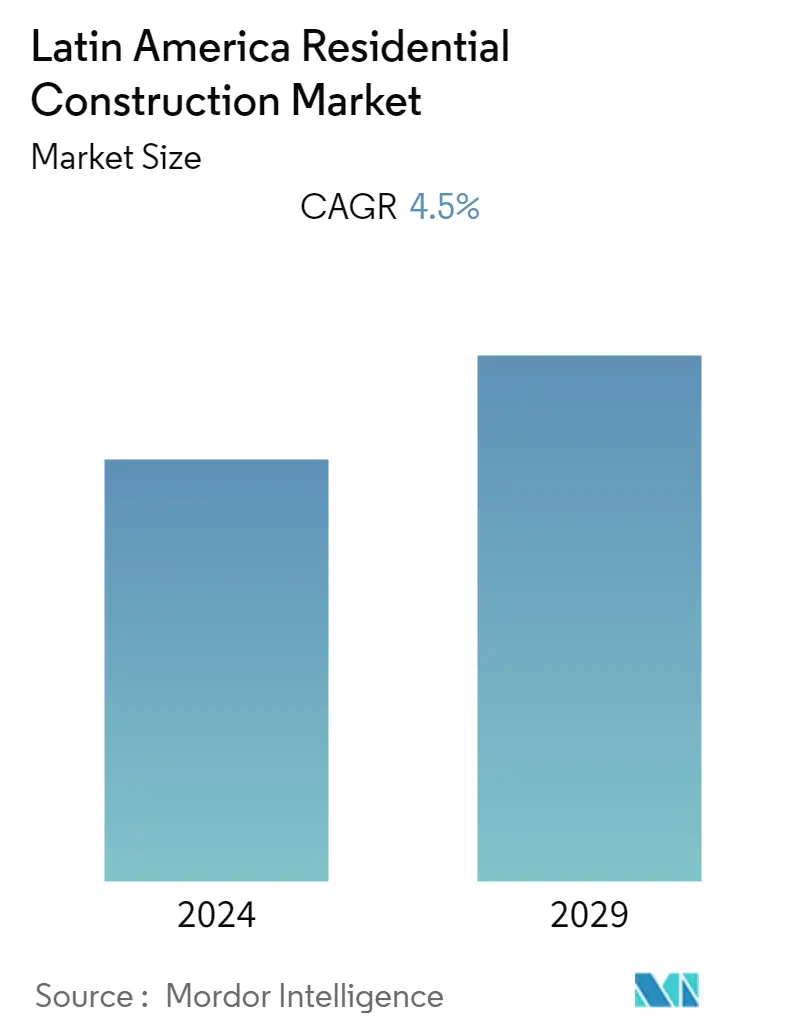
| Study Period | 2020 - 2029 |
| Base Year For Estimation | 2023 |
| Forecast Data Period | 2024 - 2029 |
| Historical Data Period | 2020 - 2022 |
| CAGR | 4.50 % |
| Market Concentration | Low |
Major Players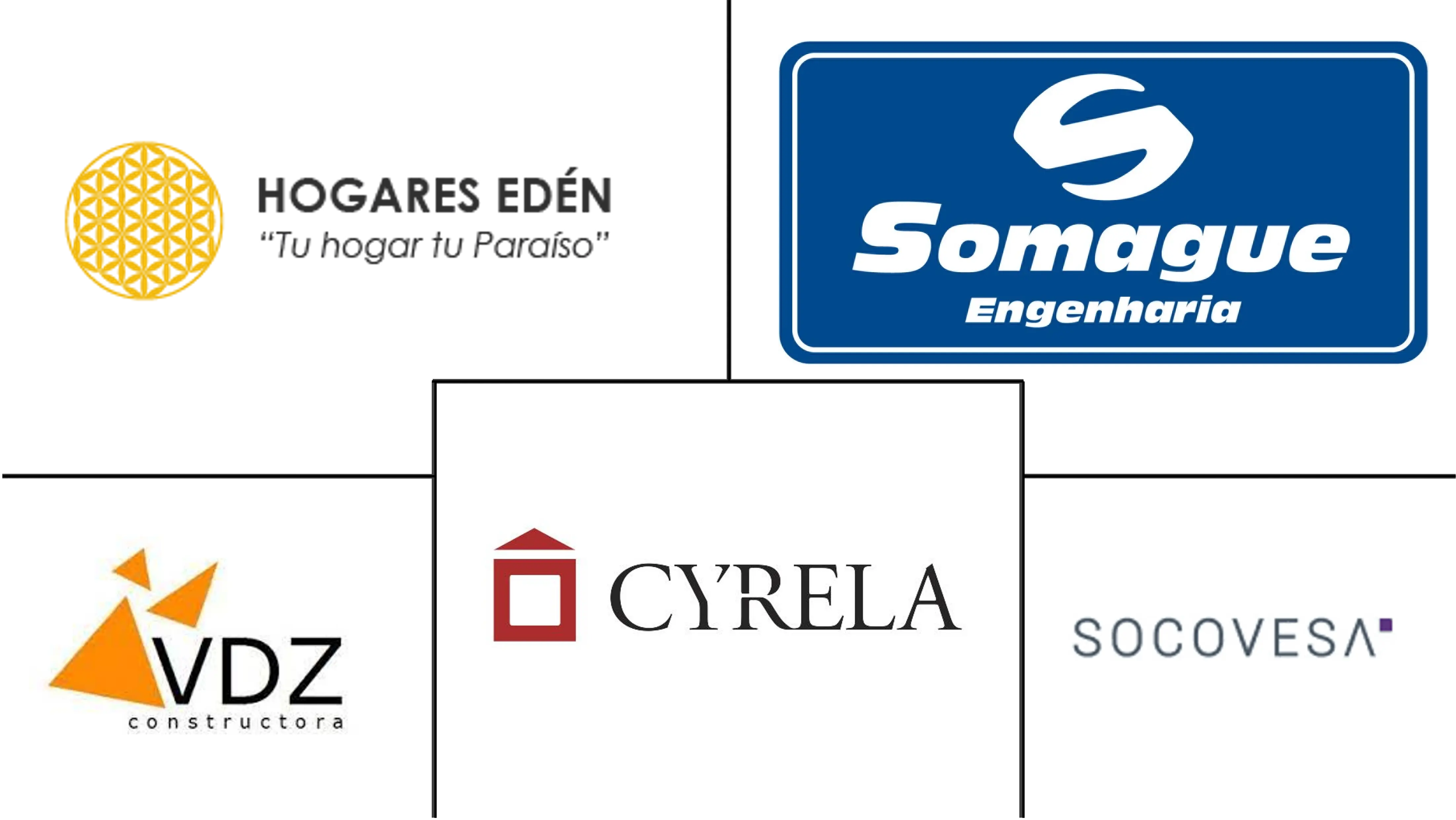
*Disclaimer: Major Players sorted in no particular order |
Latin America Residential Construction Market Analysis
The Latin America Residential Construction Market is poised to register a CAGR of 4.5% during the forecast period (2022 - 2027). Due to the COVID-19 epidemic, which caused lockdowns and required residents to stay at home, the residential real estate industry was forced to halt.
- On average, there are 23 persons per 100 people living in settlements with substandard and unofficial housing out of the 600 million people that call Latin America and the Caribbean home.
- A systemic housing strategy is necessary to address the issue of housing access in Latin America, particularly for the poorest populations, and to increase incomes for those who are most disadvantaged socioeconomic groups.
- A lot of advancement has been made more lately. Today's economies and property markets in Latin America are considerably more thriving than they were even just 20 years ago. To give better housing options, local businesses have adapted international real estate development and construction processes while investing in their own technologies and people capacity. National laws and policies in a few Latin American nations are currently de jure more effective and progressive than those in many wealthy nations. The introduction of banking, governmental, and Proptech platforms that distribute information and give buyers and sellers tools to speed up and formalize transactions has improved public registries and increased market transparency.
Latin America Residential Construction Market Trends
This section covers the major market trends shaping the Latin America Residential Construction Market according to our research experts:
Social Rental Drive
In general terms, alternative forms of tenure such as the rental market for low-income families have not been fully developed in Latin America. For example, Europe applies different models where the state offers benefits (soft loans, subsidies, tax exemptions, concessions on built surfaces, etc.) to various associations and private companies created for this purpose, with the commitment to rent homes at below-market values for low-income families.
A social rental policy that can be applied in a generalized manner requires a long-term commitment from the state to the private sector. In Germany for example, the government grants firms subsidies in the form of fund transfers, loans at below-market rates, preferential tax treatment, in exchange for placing low-cost rental units on the market for middle and lower-middle-income families. In reality, these prerogatives seek to lower supply costs rather than improve the ability of families to pay.
On the other hand, providing subsidies to families contributes to efficiency, since it allows for better choice of homes according to needs and encourages competition around available housing. If there were no possibility of this demand subsidy, providers would have no incentive to improve the conditions of units to attract "their customers".
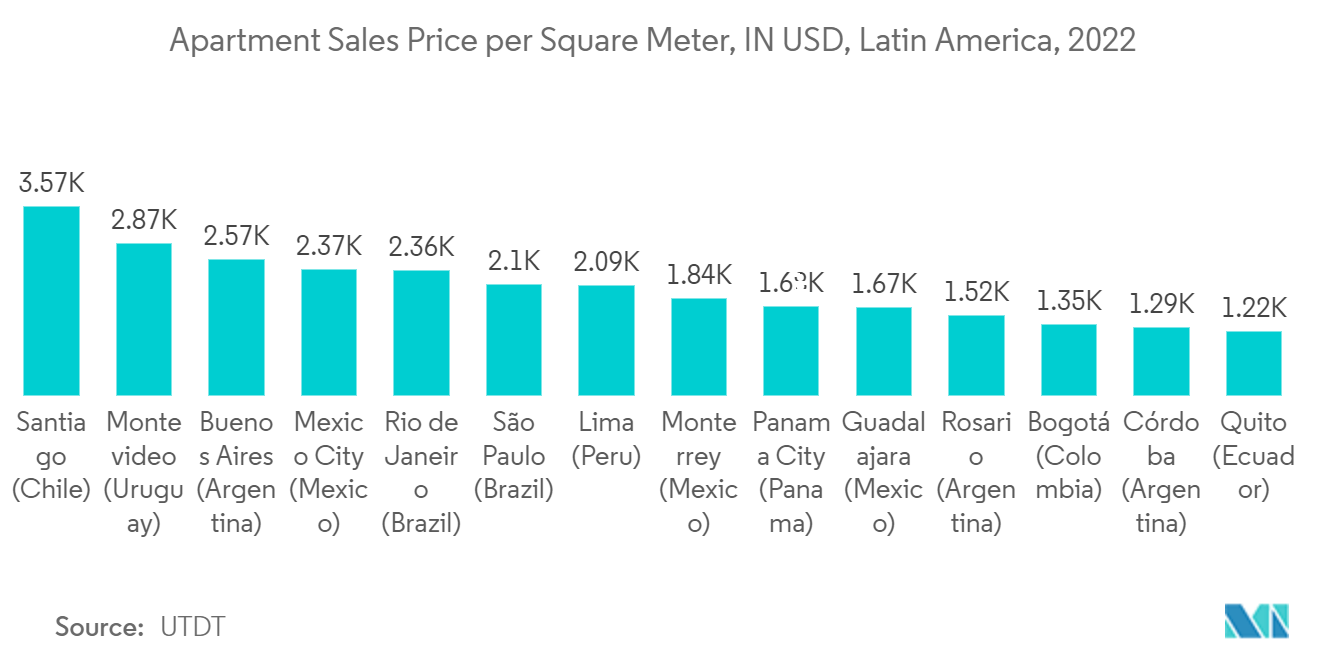
Increasing Demand for Houses in Mexico
Mexico needs to invest nearly 4% of its gross domestic product annually to build 800,000 housing units a year over the coming two decades to keep up with demand. That comes out to 3.87% of the (country's) GDP.
Demand for houses in Mexico is rising while the number of people living together is shrinking. In 1990, there were five people per home in Mexico. By 2020, there were only 3.6 per home.
A number of homes in Mexico will also have to be replaced in coming years. Around 57% of homes were built by their owners, according to Mexico's national statistics agency, and many do not meet building codes.
Well-funded, La Haus is investing in dignosis because it knows that there is a huge housing demand in Spanish-Speaking Latin America, not only Mexico.
La Haus' recently rounds:
- Series B extension - USD 100 million led by Acrew Capital and Renegade Partners, debt funding
- Series B - USD 35 million Series B round led by Greenspring Associates
- Series A - USD 10 million led by Kaszek Ventures, after previously raising $6 million from NFX.
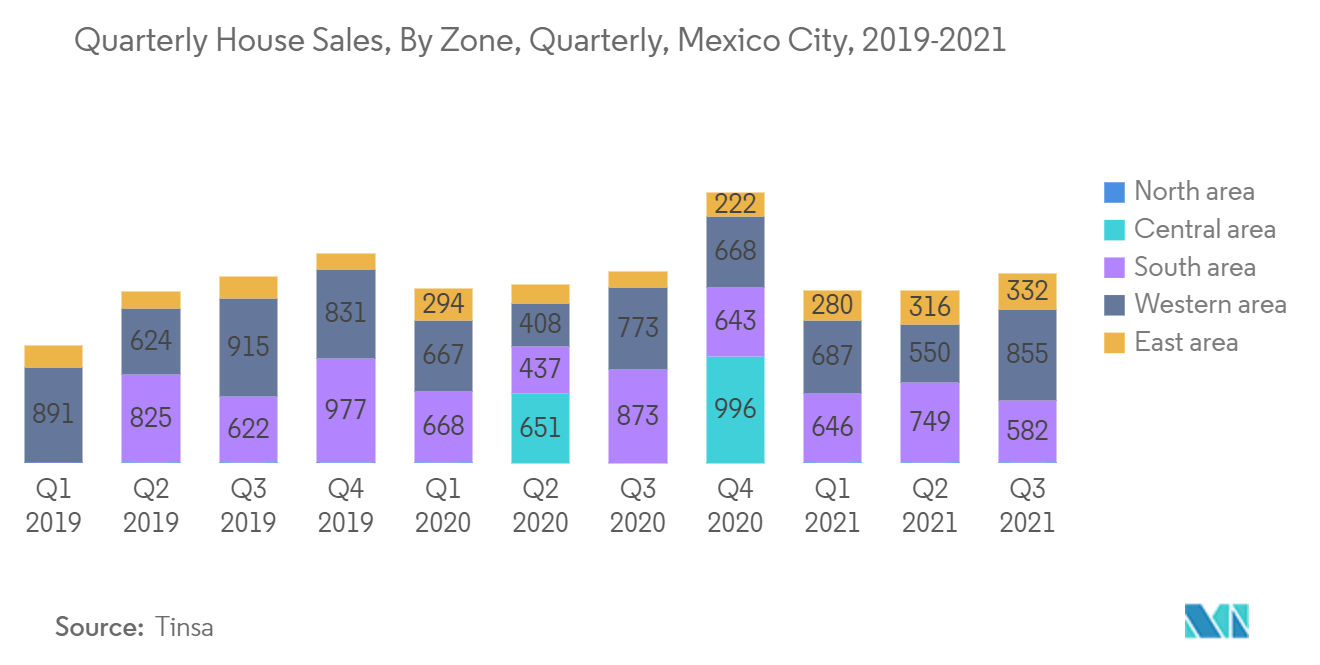
Latin America Residential Construction Industry Overview
The German residential real estate sector has become increasingly competitive. The increasing spending on infrastructure, new government initiatives to drive investments, and new project announcements are expected to bring an overall development in the real estate sector, which may further enhance the interest of more investors. Some of the major players in Latin America includes Hogares Edén, S.A. de C.V., Constructora VDZ SpA, Somague-Engenharia, S.A, Cyrela Brazil Realty S.A., Socovesa S.A. etc.
Latin America Residential Construction Market Leaders
-
Hogares Edén, S.A. de C.V.
-
Constructora VDZ SpA
-
Somague-Engenharia, S.A
-
Cyrela Brazil Realty S.A.
-
Socovesa S.A.
*Disclaimer: Major Players sorted in no particular order
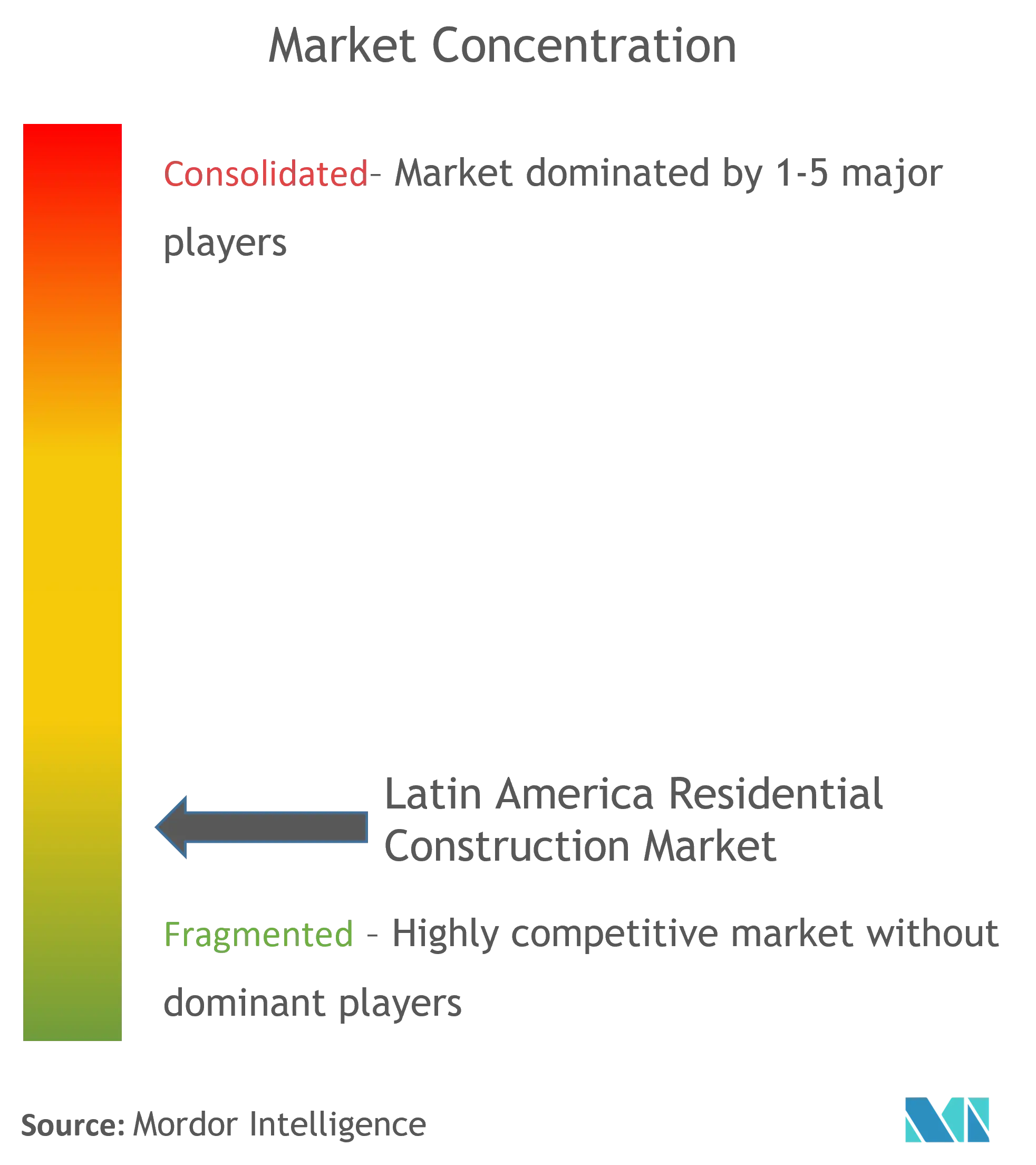
Latin America Residential Construction Market News
- January 2023: Modularis is set to break ground in May of 2023 for new residential development in Sao Paulo, Brazil, made possible by modular construction and will be comprised of two concrete floors with commercial spaces and 11 floors of modular apartments and is set to be complete by the end of the 2023.
- September 2022: A new Las Colinas housing community planned to bring about six dozen high-end homes next to the headquarters building for Fluor Corp. The more than 22-acre single-family home neighborhood is estimated to have a value of USD 140 million and will be constructed at Las Colinas and La Villita boulevards in Irving.
Latin America Residential Construction Market Report - Table of Contents
1. INTRODUCTION
- 1.1 Study Assumptions
- 1.2 Scope of the Study
2. RESEARCH METHODOLOGY
- 2.1 Analysis Methodology
- 2.2 Research Phases
3. EXECUTIVE SUMMARY
4. MARKET INSIGHTS
- 4.1 Current Market Scenario
- 4.2 Market Drivers
- 4.3 Market Restraints
- 4.4 Market Opportunities
-
4.5 Porter's Five Forces Analysis
- 4.5.1 Threat of New Entrants
- 4.5.2 Bargaining Power of Buyers/Consumers
- 4.5.3 Bargaining Power of Suppliers
- 4.5.4 Threat of Substitute Products
- 4.5.5 Intensity of Competitive Rivalry
- 4.6 Government Initiatives and Regulatory Aspects Pertaining to the ResidentialConstruction Sector
- 4.7 Insights into Prefabricated Homes in the Region
- 4.8 Insights into the Interest Rates for the General Economy and Construction Sector
- 4.9 Insights into the Support Provided by the Government and Public-private Partnerships for Affordable Housing
- 4.10 Impact Of Covid -19 On The Market
5. MARKET SEGMENTATION
-
5.1 By Type
- 5.1.1 Villas/Landed Houses
- 5.1.2 Condominiums/Apartments
- 5.1.3 Prefabricated Homes
-
5.2 By Country
- 5.2.1 Mexico
- 5.2.2 Brazil
- 5.2.3 Argentina
- 5.2.4 Peru
- 5.2.5 Chile
- 5.2.6 Uruguay
- 5.2.7 Rest of Latin America
6. COMPETITIVE LANDSCAPE
- 6.1 Overview (Market Concentration and Major Players)
-
6.2 Company Profiles
- 6.2.1 Hogares Eden, S.A. de C.V.
- 6.2.2 Constructora VDZ SpA
- 6.2.3 Somague-Engenharia, S.A
- 6.2.4 Cyrela Brazil Realty S.A.
- 6.2.5 Socovesa S.A.
- 6.2.6 Fluor Corporation
- 6.2.7 Carso Infraestructura y Construccion
- 6.2.8 Besalco S.A.
- 6.2.9 ACS Servicios, Comunicaciones Y Energa Mexico, S.A. De C.V.
- 6.2.10 Ingenieria y Construccion Cima SpA*
- *List Not Exhaustive
- 6.3 Other Companies
7. FUTURE OF THE MARKET
8. APPENDIX
** Subject To AvailablityLatin America Residential Construction Industry Segmentation
Residential construction involves the building of individual and multi-family housing. These may include single-units, manufactured housing, such as mobile homes and pre-built houses, duplexes, quadplexes, apartment buildings as well as condominiums.
The Latin America Residential Construction Market is segmented by Type (Villas/Landed Houses and Condominiums/Apartments) and by Country (Mexico, Brazil, Argentina, Peru, Chile, Uruguay and Rest of Latin America). The report offers market size and forecasts for the Latin America Residential Construction market in Value (USD billion) for all the above segments.
| By Type | Villas/Landed Houses |
| Condominiums/Apartments | |
| Prefabricated Homes | |
| By Country | Mexico |
| Brazil | |
| Argentina | |
| Peru | |
| Chile | |
| Uruguay | |
| Rest of Latin America |
Latin America Residential Construction Market Research FAQs
What is the current Latin America Residential Construction Market size?
The Latin America Residential Construction Market is projected to register a CAGR of 4.5% during the forecast period (2024-2029)
Who are the key players in Latin America Residential Construction Market?
Hogares Edén, S.A. de C.V., Constructora VDZ SpA, Somague-Engenharia, S.A, Cyrela Brazil Realty S.A. and Socovesa S.A. are the major companies operating in the Latin America Residential Construction Market.
What years does this Latin America Residential Construction Market cover?
The report covers the Latin America Residential Construction Market historical market size for years: 2020, 2021, 2022 and 2023. The report also forecasts the Latin America Residential Construction Market size for years: 2024, 2025, 2026, 2027, 2028 and 2029.
Latin America Residential Construction Industry Report
Statistics for the 2024 Latin America Residential Construction market share, size and revenue growth rate, created by Mordor Intelligence™ Industry Reports. Latin America Residential Construction analysis includes a market forecast outlook to 2029 and historical overview. Get a sample of this industry analysis as a free report PDF download.



